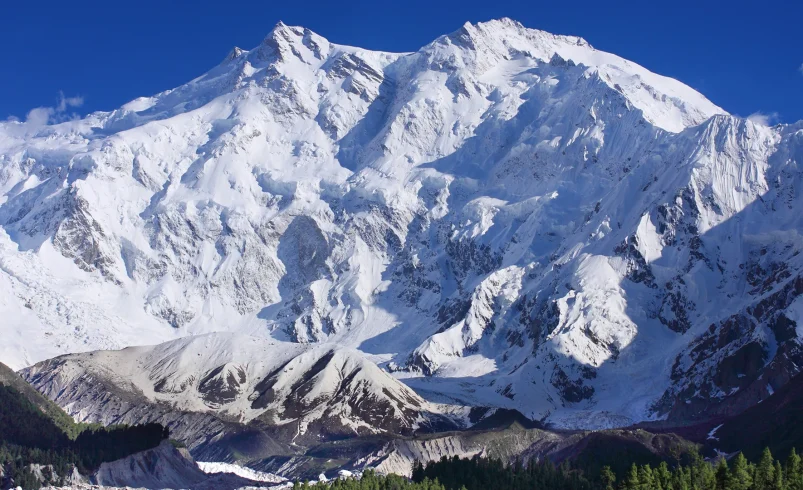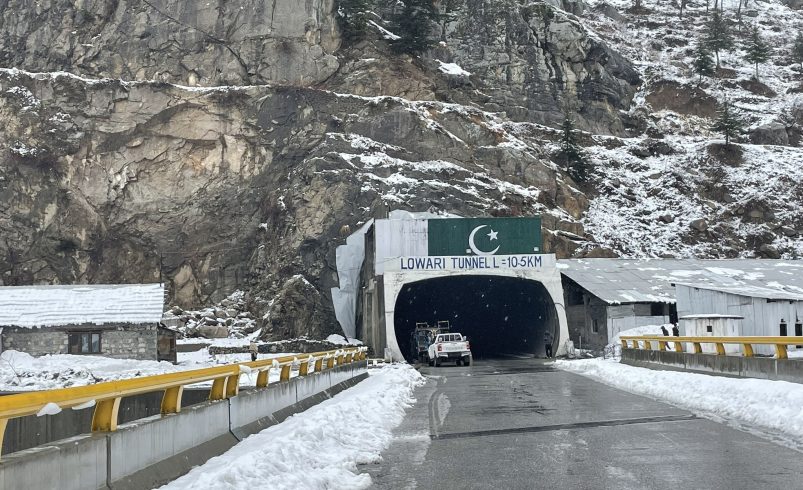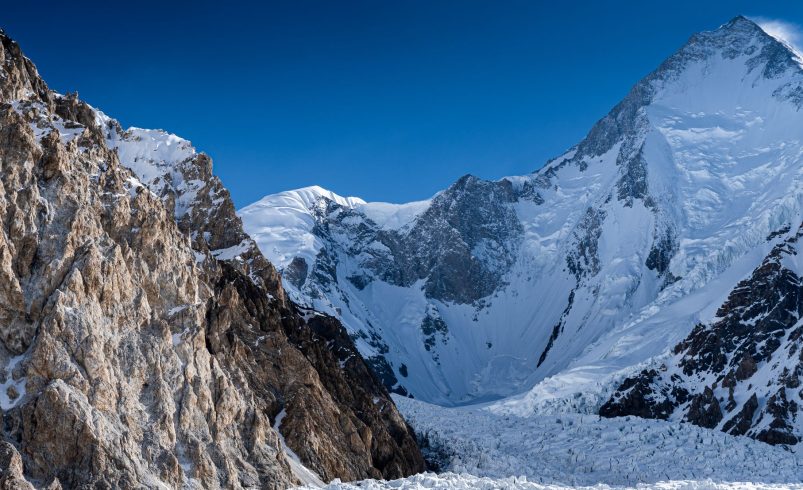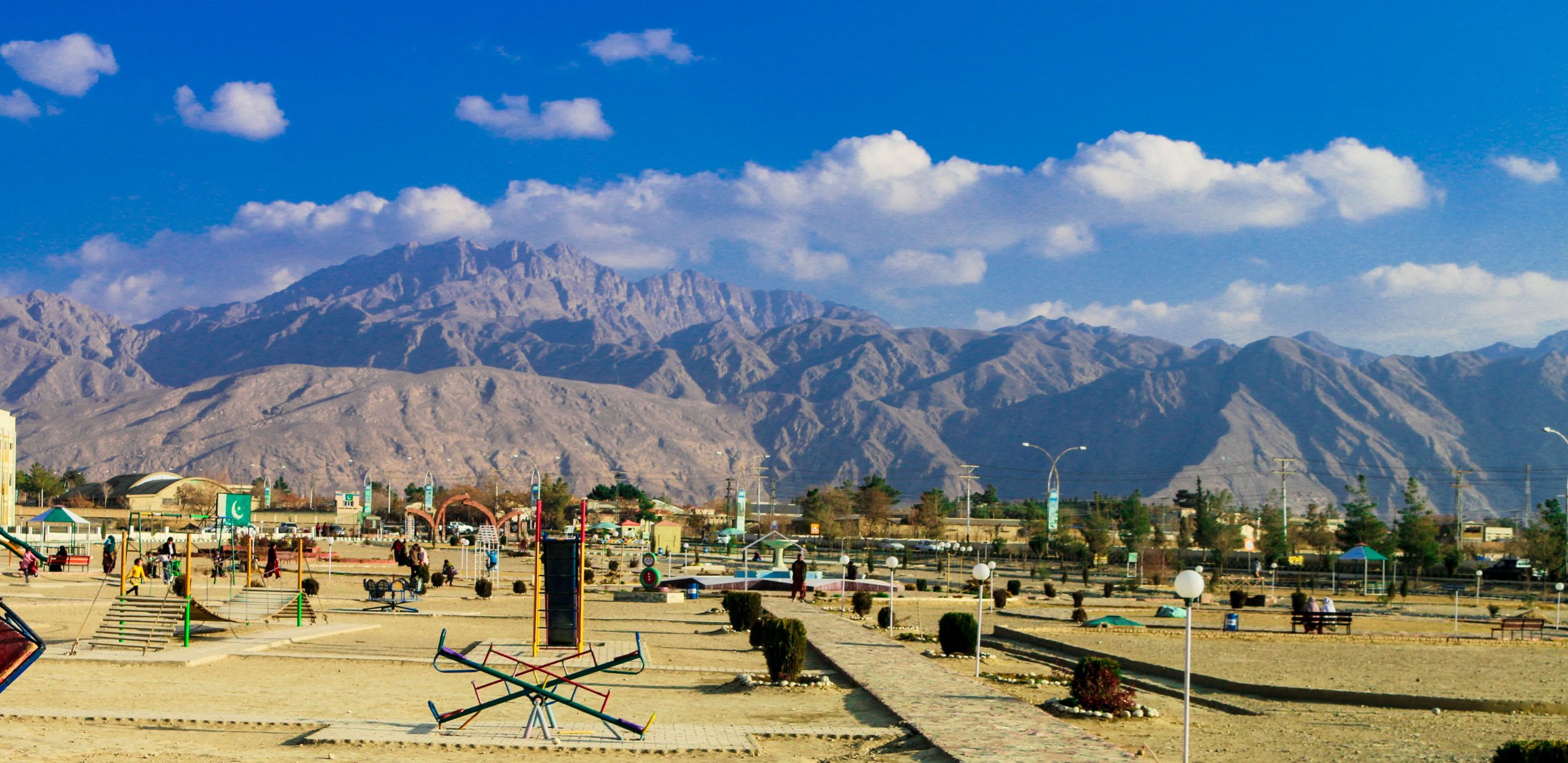
- July 22, 2025
🏔️ Introduction
Nanga Parbat, standing at a staggering 8,126 meters (26,660 feet), ranks as the ninth highest mountain in the world and the second-highest in Pakistan after K2. Nestled in the western Himalayas, it is located in Gilgit-Baltistan, Pakistan, and is famous for its dramatic elevation, treacherous climbs, and breathtaking landscapes.
📖 Historical Significance of Nanga Parbat
Nanga Parbat, meaning “Naked Mountain” in Sanskrit, has a reputation both awe-inspiring and dangerous. The peak earned its ominous nickname “Killer Mountain” due to the high number of mountaineering fatalities, especially during early expeditions.
The first successful ascent of the peak was made by Hermann Buhl in 1953 as part of a German-Austrian expedition. His solo summit without supplemental oxygen remains one of the most daring feats in mountaineering history.
🗺️ Location and Routes to Nanga Parbat
🌄 Geographical Location
- Province: Gilgit-Baltistan
- Region: Diamer District
- Mountain Range: Western Himalayas
🛣️ How to Reach Nanga Parbat from Islamabad
| Route | Distance | Duration |
|---|---|---|
| Islamabad to Chilas (via Naran/Babusar) | 420 km | 10-12 hours |
| Chilas to Fairy Meadows Base Camp | 60 km (jeep + trek) | 3 hours jeep + 3 hours trek |
| Alternative: Islamabad to Gilgit (by air) | 530 km | 1 hour flight + 2 hours by road to Raikot Bridge |
- First, drive or fly to Gilgit or Chilas.
- From Raikot Bridge, take a thrilling jeep ride to Tattu Village.
- Trek from Tattu Village to Fairy Meadows Base Camp.
🧭 Best Time to Visit Nanga Parbat
The ideal time to visit Nanga Parbat is between May and September. During these months, the weather is relatively clear, the views of the snow-covered summit are stunning, and the trail conditions are more favorable.
- May-June: Best for lush green meadows and early trekking.
- July-August: Peak trekking season.
- September: Quieter with cool weather and autumnal colors.
📅 Nanga Parbat Expedition Itinerary – Diamir Route (via Fairy Meadows)
🧭 Expedition Duration: 35–45 Days
This itinerary is based on a moderate-paced expedition including acclimatization, weather windows, and high-altitude preparation.
🛫 Day 1: Arrival in Islamabad
- Arrival of team members in Islamabad.
- Meet & greet with local tour operator.
- Final expedition briefing and gear check.
- Overnight stay in Islamabad.
🚙 Day 2: Islamabad to Chilas via Naran or Besham
- Travel to Chilas via Babusar Top (in summer) or Karakoram Highway.
- Drive time: 12–14 hours depending on route.
- Overnight in Chilas hotel.
🚙 Day 3: Chilas to Raikot Bridge → Jeep to Tattu → Trek to Fairy Meadows
- Drive to Raikot Bridge (1 hour).
- Jeep ride to Tattu village (~2.5 hours).
- Trek to Fairy Meadows (~3 hours).
- Overnight at Fairy Meadows Cottages.
🥾 Day 4: Trek to Beyal Camp
- Acclimatization hike to Beyal Camp (~3 hours).
- Stunning views of Nanga Parbat’s west face.
- Return or overnight in Beyal (optional).
🥾 Day 5: Trek to Base Camp
- Trek to Nanga Parbat Base Camp (~4,200m).
- Porters carry expedition gear.
- Setup and overnight at Base Camp.
🏕️ Acclimatization & Climbing Phase
🏕️ Days 6–14: Acclimatization Rotation
- Carry gear to Camp I (~5,000m) and return to Base Camp.
- Establish Camp I and overnight stay.
- Rotate up to Camp II (~6,200m), return to Base Camp.
- Rest days included.
🧗 Days 15–30: Establish Higher Camps & Rotation
- Setup Camp II and Camp III (~7,100m).
- Sleep at higher altitude to adapt.
- Summit reconnaissance depending on weather.
⛰️ Days 31–35: Summit Push
- Move from Base Camp to Camp I, Camp II, Camp III over 3–4 days.
- Summit Day from Camp III to summit (8,126m) and return to Camp III.
- Descent to Base Camp over next 1–2 days.
🏁 Return Phase
🚶♂️ Day 36: Rest Day at Base Camp
- Celebration, rest, and gear packing.
🚶♂️ Day 37: Trek down to Tattu Village
- Reverse trek via Beyal & Fairy Meadows to Tattu.
🚙 Day 38: Jeep to Raikot Bridge → Drive to Chilas
- Overnight in Chilas.
🚙 Day 39: Chilas to Islamabad
- Return to Islamabad via KKH or Babusar Top.
🛫 Day 40: Debriefing & Departure
- Final debriefing at Alpine Club of Pakistan.
- Certificate distribution.
- Departure from Islamabad Airport.
🧳 Optional Buffer Days: Day 41–45
- Allow for weather delays or summit window changes.
- Recommended to keep 3–5 contingency days.
🏔️ Famous Summits of Nanga Parbat
Over the decades, Nanga Parbat has witnessed numerous historic and groundbreaking ascents—some heroic, others tragic. Due to its deadly terrain and unpredictable weather, every successful summit has a tale of endurance, courage, and often sacrifice.
🏆 Notable First and Historic Summits
🥇 1953 – First Successful Ascent by Hermann Buhl (Austria)
- Date: July 3, 1953
- Route: Rakhiot Face
- Style: Solo ascent, no supplemental oxygen
- Expedition: German-Austrian Expedition
- Achievement: First ever summit of Nanga Parbat
- Significance: Buhl made the summit push alone, at night, without bottled oxygen—a legendary feat in mountaineering history.
⚰️ 1970 – Reinhold Messner’s Rupal Face Ascent
- Climber: Reinhold Messner (Italy)
- Route: Rupal Face ascent, Diamir Face descent
- Tragedy: His brother Günther Messner died during descent
- Significance: First traversal of the mountain (ascent from one side, descent from another), but marked by deep personal loss.
🧊 2016 – First Winter Ascent
- Team:
- Ali Sadpara (Pakistan)
- Alex Txikon (Spain)
- Simone Moro (Italy)
- Date: February 26, 2016
- Style: Alpine style
- Achievement: First-ever successful winter summit of Nanga Parbat
- Significance: After more than 30 failed winter attempts, this ascent broke a decades-long barrier.
📅 Other Famous Summits and Climbers
🧗 1985 – Jerzy Kukuczka (Poland)
- Legendary Polish climber who summited as part of his quest to conquer all 8000ers.
🧗♀️ 1986 – Wanda Rutkiewicz (Poland)
- Among the first women to summit Nanga Parbat and a pioneer in women’s high-altitude climbing.
🧗 1990 – Anatoli Boukreev (Russia)
- Known for fast solo ascents and climbing without oxygen.
🧗 2005 – Tomaz Humar (Slovenia)
- Attempted solo climb via Rupal Face; trapped on a ledge for six days before rescue.
🧗 2013 – Daniele Nardi & Elisabeth Revol
- Attempted the Mazeno Ridge route; Elisabeth Revol made multiple attempts on Nanga Parbat.
🧾 Summary Table: Famous Summits of Nanga Parbat
| Year | Climber(s) | Nationality | Route | Notable Info |
|---|---|---|---|---|
| 1953 | Hermann Buhl | Austrian | Rakhiot Face | First summit, solo, no oxygen |
| 1970 | Reinhold Messner | Italian | Rupal → Diamir | Brother Günther died |
| 1986 | Wanda Rutkiewicz | Polish | Rupal | One of first women to summit |
| 1990 | Anatoli Boukreev | Russian | Rakhiot | No oxygen |
| 2005 | Tomaz Humar | Slovenian | Rupal (solo attempt) | Rescued by Pakistan Army |
| 2016 | Ali Sadpara, Txikon, Moro | Pakistani/Spanish/Italian | Diamir | First winter ascent |
🌟 Nanga Parbat’s Climbing Legacy
Nanga Parbat continues to attract elite mountaineers from around the world. While no climb is ever routine, the mountain has evolved from a “Killer Mountain” to a stage of human endurance and triumph, especially after Ali Sadpara’s legendary 2016 winter summit.
🧗♂️ Climbing Nanga Parbat – For the Brave and Skilled
Nanga Parbat is a dream and nightmare for mountaineers. With its notorious steep faces, ice walls, and unpredictable weather, it ranks among the most dangerous 8,000-meter peaks on Earth. The mountain has claimed over 60 lives before its first successful ascent, earning it the title “Killer Mountain.”
🧭 Major Climbing Routes
📍 Diamir (West) Face – Standard Route
The Diamir Face is the most frequently used route by climbers and leads from Raikot Bridge to Fairy Meadows, then onward to Base Camp. From here, mountaineers proceed through multiple camps to the summit.
- Difficulty: Extremely high
- Hazards: Avalanches, seracs, rockfalls
- Base Camp Altitude: 4,200 meters
- Summit Push Duration: Typically 6–9 weeks (including acclimatization)
📍 Rupal (South) Face – Tallest Mountain Face
The Rupal Face rises over 4,600 meters from base to summit, making it the highest vertical mountain face on Earth. It is only attempted by elite climbers.
- Notable Climbs: Reinhold Messner’s 1970 expedition (first ascent via Rupal face), in which he lost his brother Günther
- Camp Locations: Camp I (~5,000m), Camp II (~6,200m), Camp III (~7,000m)
🏕️ Base Camps
| Face | Base Camp Location | Altitude | Notes |
|---|---|---|---|
| Diamir Face | Fairy Meadows → Beyal | ~4,200m | Popular for trekkers and climbers |
| Rupal Face | Rupal Valley | ~3,900m | More remote, accessible via Astore |
🧰 Climbing Permits and Requirements
Climbing Nanga Parbat requires:
- Permit from Gilgit-Baltistan Council
- Liaison Officer (LO) assigned by the government
- Insurance for team and LO
- Environmental bond
| Item | Approximate Cost (USD) |
|---|---|
| Climbing Permit (1–7 members) | $1,800 – $3,000 |
| Liaison Officer Fee | $3,000 – $4,000 |
| LO Insurance | $400 |
| Environmental Security Deposit | $1,000 (refundable) |
Note: All climbing expeditions must register through a licensed tour operator approved by the Alpine Club of Pakistan (ACP).
⚠️ Climbing Hazards
Climbers must be prepared for:
- Rapid weather changes
- Altitude sickness
- Crevasses and avalanches
- Technical mixed climbing (rock + ice)
Many routes on Nanga Parbat remain technically demanding, requiring expert-level experience, oxygen support, and pre-acclimatization.
🧑🔬 Physical and Technical Fitness
To attempt Nanga Parbat, climbers must have:
- Multiple 6,000m+ and 7,000m+ peaks experience
- Alpine climbing skills (fixed ropes, crevasse rescue, ice climbing)
- High-altitude endurance and mental resilience
🏞️ Main Tourist Attractions Near Nanga Parbat
🌲 Fairy Meadows
Often considered one of the most beautiful camping sites in the world, Fairy Meadows offers breathtaking views of Nanga Parbat. It serves as the gateway to the base camp and a perfect place for trekkers and photographers.
🧱 Rupal Face
Located on the southern side, Rupal Face is one of the tallest mountain faces in the world, ideal for advanced trekkers and climbers.
🌄 Raikot Face
More accessible than Rupal, the Raikot Face is the most common approach for visitors through Fairy Meadows and the easiest way to get close to the mountain.
🥾 Activities to Do Around Nanga Parbat
- Trekking to Base Camp via Fairy Meadows
- Camping under the stars
- Photography & Landscape Exploration
- Horse Riding in the meadows
- Bonfires and local music nights
- Star gazing at 3,300 meters altitude
- Guided climbing (for experts)
🎭 Cultural Heritage and Local Communities
The region is home to the Shina-speaking people, known for their hospitality and rich folklore. You can witness traditional dance, local festivals, and the simple mountain lifestyle that’s untouched by commercialization.
🛏️ Where to Stay Near Nanga Parbat
🏕️ Camping at Fairy Meadows
- Fairy Meadows Cottages
- Broad View Hotel
- Raikot Sarai
These accommodations offer basic facilities, cozy wooden huts, and panoramic views of Nanga Parbat.
🍲 What to Eat in Nanga Parbat Region
Try local Gilgiti cuisine such as:
- Chapshuro – stuffed meat bread
- Gurasa – traditional roti
- Mamtu – local dumplings
- Salted tea (noon chai) with yak milk
- Dried apricots and nuts
Meals are prepared with local organic ingredients and served warm to beat the high-altitude chill.
💰 Estimated Costs in PKR
| Expense | Estimated Cost |
|---|---|
| Islamabad to Chilas (Fuel + Transport) | 8,000 – 10,000 PKR |
| Jeep Ride to Tattu Village (Return) | 7,000 – 9,000 PKR |
| Accommodation (per night) | 3,000 – 5,000 PKR |
| Food (per day) | 1,000 – 1,500 PKR |
| Trek Guide (optional) | 2,000 – 4,000 PKR |
Total Trip Cost (3-4 days): 25,000 – 35,000 PKR
🧭 Nearby Places to Explore
| Place | Distance from Fairy Meadows | Travel Time |
|---|---|---|
| Beyal Camp | 5 km trek | 2 hours |
| Nanga Parbat Viewpoint | 3 km trek | 1 hour |
| Rama Meadows | 90 km | 3 hours by road |
| Astore Valley | 95 km | 3.5 hours by road |
| Gilgit City | 115 km | 4 hours by road |
🎒 Travel Packing Checklist
- Warm clothes and layers
- Hiking shoes and socks
- Rain jacket
- Portable charger
- Sunscreen & sunglasses
- First aid kit
- Trekking poles
- Snacks & energy bars
- Water bottle with filter
🚑 Emergency Contacts & Health Precautions
- Rescue 1122 (Gilgit): 05811-920800
- Local Police (Chilas): 05812-920142
- Fairy Meadows Medical Post (Seasonal): Ask your guide for location
- Tips: Avoid altitude sickness by staying hydrated and ascending gradually.
💡 Travel Tips for Nanga Parbat
- Always hire a local guide if trekking to the base camp.
- Start your trek early in the morning for clear weather and safe descent.
- Respect the local culture—seek permission before taking photos.
- Avoid littering and follow Leave No Trace ethics.
- Confirm weather conditions before departure.
🙋♂️ FAQs
Is Nanga Parbat safe to visit for tourists?
Yes, Nanga Parbat is safe for tourists who stay on the recommended routes and travel with experienced guides. With improved security in Gilgit-Baltistan, tourism is booming in the region.
When is the best time to visit Nanga Parbat for trekking?
The best time to visit Nanga Parbat is between May and September when the weather is stable, trails are accessible, and meadows are in full bloom.
Can beginners trek to Fairy Meadows and Nanga Parbat Base Camp?
Absolutely. While the final stretch to the base camp can be challenging, beginners can trek to Fairy Meadows easily with breaks and a good guide.
How high is Nanga Parbat, and why is it called the “Killer Mountain”?
Nanga Parbat is 8,126 meters high and earned the nickname “Killer Mountain” due to numerous deaths in early attempts before its first successful summit in 1953.
What is the most scenic part of Nanga Parbat?
Fairy Meadows offers the most scenic and uninterrupted view of Nanga Parbat, particularly during sunrise and sunset.
Is internet available at Fairy Meadows?
There is limited or no internet connectivity at Fairy Meadows. It’s best to inform loved ones in advance and enjoy the digital detox.
Can I travel solo to Nanga Parbat?
While solo travel is possible, it is strongly recommended to hire a local guide, especially for the trek from Tattu Village to Fairy Meadows and the base camp.
What kind of gear do I need for trekking?
You’ll need warm clothing, trekking boots, and rain gear. A complete checklist is provided in the packing section above.
Are there any festivals celebrated near Nanga Parbat?
Yes, local cultural events and polo matches are held in Gilgit-Baltistan, especially during summer, showcasing local traditions, food, and music.
Is altitude sickness a concern at Nanga Parbat?
Yes, especially at higher altitudes like Beyal Camp or Base Camp, so stay hydrated and ascend gradually to avoid Acute Mountain Sickness (AMS).
🏁 Conclusion: Nanga Parbat – A Bucket-List Adventure in Pakistan
Nanga Parbat is not just a mountain—it’s a symbol of nature’s grandeur and untamed spirit. From the serene Fairy Meadows to the dramatic glacial cliffs, every view tells a story. With proper planning, your Nanga Parbat travel guide will lead you through unforgettable vistas, rich culture, and heart-thumping adventure.
Whether you’re a trekker, photographer, or cultural explorer, this ninth highest peak in the world promises an experience of a lifetime. Let Nanga Parbat inspire your next journey—bold, breathtaking, and deeply spiritual.






